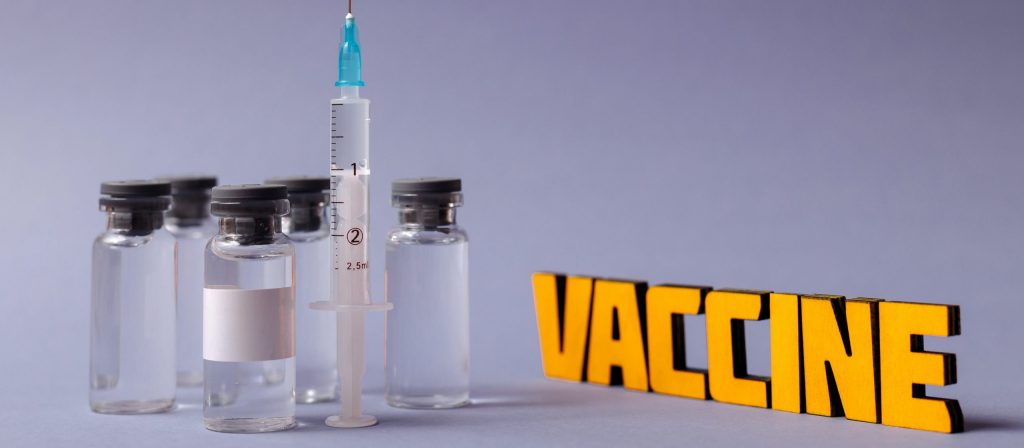Between an aging U.S. population with increasing health needs, a larger insured population thanks to the Affordable Care Act and a growing shortage of doctors to serve them — particularly primary-care physicians — there’s a huge public health crisis brewing in this country. We knew it before the pandemic, and the novel coronavirus has only made it worse; the Centers for Disease Control and Prevention (CDC) reports that at least 4 in 10 adults have avoided medical care because of COVID-19 concerns, though telehealth services such as those of RxLive are seen to be of help.
The role of clinical pharmacists is continuing to expand as a part of the solution to combat the growing physician shortage. They’re becoming not only an extension of the office-based team, leveraging their expert knowledge of the many available pharmacotherapy options; they’re also directly contributing to pharmacy protocols and, in some states, are gaining expanded prescriptive authority within a specific framework using those protocols to augment some aspects of direct physician care.
Failing grades for physician coverage
On a standard A to F graded scale, the U.S. health system isn’t bringing home grades our parents would be proud to see. Based on current trends, a rapidly growing number of states are receiving a D or F for their physician-shortage ratio. A study published by Human Resources for Health says that the physician shortage ratio “flunking” grades will increase from 4 states in 2017 to 23 by 2030. That’s almost half the nation! It’s estimated that the West will have the greatest shortage ratio (69 per 100,000 population) while the Northeast will have a surplus of 50 physician jobs per 100,000 persons.
Those predictions are already well underway. California, followed by Texas, Missouri, Alaska, Florida and others already top the government’s Health Professionals Shortage Areas (HPSA) list, with population-to-provider ratios of 3,500 to 1 considered a shortage. The fact that there are currently 7,203 areas with a HPSA designation is truly alarming.
A team-based approach to delivering value-based care is seen as essential, by increasing the effective reach of PCPs and other doctors, with physician assistants, nurse practitioners, clinical pharmacists and various other mid-level providers assuming more responsibilities, based on predetermined guidelines.
The expanding role of pharmacists in patient-centered care has led to growing state and prescriber recognition of their public health value. Pharmacists’ extensive medication knowledge, unique pharmacotherapy and clinical expertise — coupled with their broad availability either locally or via telehealth — make them key contributors to healthcare teams and in achieving public health goals. Some of us, like the RxLive team, also have developed and work with advanced analytic tools to report on care-coordination and quality metrics for today’s value-based world, detecting trends and recommending solutions within patient populations.
Pharmacist involvement in protocols
Dependent and independent development of standardized protocols are on the upswing, as qualified pharmacists become authorized to expand their roles as part of the multidisciplinary medical team. In fact, with their deep and broad pharmacotherapy knowledge, they’re essential to helping develop a standardized framework for care.
The difference between dependent and independent protocol development:
- Dependent protocol prescriptive authority — Collaborative practice agreements (CPA) between physicians and pharmacists are dependent forms of prescriptive authority delegated by formal written agreements. Collaborative prescribing generally grants pharmacists permission to initiate, modify or discontinue drug therapy within the context of the agreement and protocols for a variety of defined acute or chronic conditions and preventive care.
Ordering and interpretation of lab results may also be included in CPAs and protocols. The licensed provider diagnoses patients, supervises their care and then refers them to the pharmacist to perform specific care functions defined by the CPA and as regulated through state scope-of-practice laws. Practice-specific protocols provide standardized methods for physicians and pharmacists regarding treatment of select conditions, which helps improve continuity of care and provider accountability.
Benefits — Protocols within CPAs increase provider efficiency and improve patient outcomes through expanded health services, standardized care, complementation of provider skills, and pooled knowledge during protocol formulation and utilization. Provider accountability also is increased by evaluating patients’ treatment regimen against established protocols.
Per CPAs, pharmacists can treat designated acute and chronic conditions. According to the CDC, chronic diseases are the leading cause of death in the U.S., with heart disease topping the list. Studies show that community and clinical pharmacists overall have positive impacts on patient health outcomes in the chronically ill, and that 80% of medical treatments for chronic diseases involve prescription drug use. Primary-care offices in particular can leverage pharmacists’ medication knowledge coupled with consideration of clinical practice guidelines; the guidelines can then be incorporated into written protocols used within the context of CPAs to reduce morbidity and mortality within their patient population.
- Independent protocol prescriptive authority — Statewide protocols are independent forms of pharmacist prescriptive authority without the requirement of a collaborative practice agreement. Selective state-authorized prescriptive authority empowers qualified pharmacists to prescribe under standardized protocols to help fill unmet public health needs and increase patient access to medications. Such non-negotiable protocols are developed for uncomplicated conditions that don’t require a diagnosis or for which there’s a documented diagnosis necessitating low-risk medications. Examples adopted by certain U.S. states include vaccinations, hormonal contraceptives, naloxone for opioid overdose, tobacco cessation, and travel medications. Depending on state requirements, pharmacists may have to obtain additional licensure, continuing education requirements, or notify PCPs following treatment according to protocols.
Benefits — There’s a significant opportunity to improve public health with protocols for use by pharmacists with prescriptive authority stemming from their expertise and accessibility. Access to educated health professionals without an appointment, especially those available 24 hours a day, is a rarity outside of an Emergency Department situation…with the exception of pharmacists who practice in a number of community and clinical settings.
The CDC reports there are 46.1 primary-care physicians per 100,000 in the U.S. But depending on the state, there are an estimated 35.6% to 158% pharmacists per persons, with 57% of pharmacists working in a community retail setting.
In addition, according to a recent National Health Interview Survey, 87.6% of people have a usual source of medical care. That leaves approximately 35 million people without consistent access to care. That remains a significant number of persons whose full medical needs are likely going unmet. With pharmacist accessibility and using statewide protocols, these people could significantly benefit from pharmacist accessibility and statewide protocols.
Pharmacist-administered vaccine protocols — such as for COVID-19, influenza, pneumonia and others — are an example that pharmacist services can be scaled and make a significant impact on public health goals. These existing standards can serve as a model for the implementation of additional protocols for unmet public health needs and improved standardization of care. The Center for Health Workforce Studies reports that over 100 pieces of legislation were introduced across 34 states in 2019 to expand pharmacists’ scope of practice, as awareness and documentation grows pertaining to the positive impact pharmacists have on health outcomes.
Multidisciplinary protocol development
Protocol creation and protocol template formation require a multidisciplinary team that includes pharmacists for both dependent and independent prescriptive-authority medication protocols.
In-office dependent protocol creation, particular to a CPA, uses physician medical expertise and pharmacist medication knowledge to enhance care within a specific medical practice. In an institutional setting, protocols are often developed and critically examined by pharmacy and therapeutics (P&T) advisory committees with clinical pharmacist members. Protocols created with pharmacist contributions result in consistent standards of care, establish provider accountability, and define the role of the pharmacists within the health-provider organization.
To create protocol continuity between states and establish pharmacist qualifications, the National Alliance of State Pharmacy Associations assembled The Statewide Protocol Workgroup, comprised of pharmacists and other medical professionals. The group compiled policy recommendations and resources for the standardized development of statewide protocols for pharmacists with prescriptive authority. For example, pharmacists have actively involved in a project that has helped Vermont health officials standardize pharmacotherapy-related protocols (abstract) used by the state’s emergency medical services (EMS) personnel, reducing the potential risk of medication errors.
Cutting the physician shortage, improving care standards, access
Pharmacists are uniquely qualified to provide drug information and recognized as valuable contributors to the collaborative development of standardized protocols. They’re integral in risk management and realizing positive patient outcomes secondary to medication therapy. Pharmacists promote the safe and effective use of medications, are knowledgeable about medication properties and storage requirements, and are aware of pharmacy federal and state regulations…all of which are necessary considerations for protocol development.
Statewide and CPA protocols for use by providers and pharmacists with prescriptive authority improves continuity of care and increases medical resources for chronic disease management. Access to healthcare and medications is also improved through increased community accessibility and in-office or telehealth availability of prescribing pharmacists. In addition, a multi-disciplinary team-based approach using pharmacists’ unique medication knowledge during protocol development increases safety and protocol robustness.
Resources
Access to Health Care; Collaborative Practice Agreements and Pharmacists’ Patient Care Services; State Variability in Supply of Office-based Primary Care Providers. CDC
Accessing the Size and Scope of the Pharmacist Workforce in the U.S. (PDF); The Pharmacist Workforce in the U.S. (PDF). University of Washington Center for Health Workforce Studies
Impact of Community Pharmacist-led Interventions in Chronic Disease Management. Research in Social and Administrative Pharmacy
Pharmacist Statewide Protocols: Key Elements for Legislative and Regulatory Authority. NASPA



